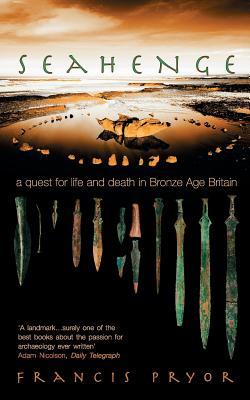Archaeology is not some exact science, with answers to give to every question if we only look hard enough. It’s partly our own fault: we’re overpopulating the Earth, and in the meantime we’re destroying great swathes of the archaeological record. We only have fragments of the past, some larger than others — Seahenge being one of the latter, far ahead of potsherds but perhaps more mysterious — and while archaeology has some light to shed, I find it best to accept up front that no one can offer a complete answer, and that if anyone claims to be certain, they’re speaking beyond the evidence in almost every case.
Francis Pryor’s book handles this pretty well, in my books, though I have no doubt there’s people out there who wish he’d stop equivocating. Much of this book involves setting this in context, linking modern and ancient lives and landscapes, and then using what evidence that offers to spin theories — theories that could be upset by the next find out of the ground, in some obscure peaty corner or air-tight chamber stumbled upon by chance.
Bearing all that in mind, I found this book fascinating. I have no personal expertise to say yay or nay to any of this — my own research interests lie in a later period, with the dawning of literature, which is in conversation with archaeology more than you’d think — so I took Pryor’s words more or less at face value. Some of his ideas seemed too sketchy, too much based on a gut reaction, but even so his description of the excavations, his impressions of them, the way they came together to synthesise an understanding of the anicent landscape… it’s all fascinating, and I would happily read more.
If you’re looking to learn specifically and solely about the place we’ve dubbed Seahenge (which was not actually built on the beach, and wasn’t in such close proximity to the sea) then only a couple of chapters of this book are of direct interest. But why you would want to look at something like this in isolation when it’s clearly part of a larger story and can only be understood in those terms, I don’t know.
One thing you may feel is that Francis Pryor has too much to say about himself and his team, particularly his wife. I enjoyed it, given that his thought processes were influenced by everything around him. A bare-bones description of the sites and the endless work of extraction and preservation would seem terribly boring to me.
Rating: 4/5


Leave a Reply